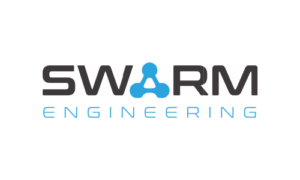Trending
April 30, 2024


SWARM Engineering was founded on the concept of what if we could solve problems instead of simply highlighting them? Anthony Howcroft, CEO of SWARM had worked in big data at Microsoft, and seen many companies getting actionable insights into their business but not fully realizing the potential to make dramatic cost savings or boost revenues. “It felt like there was another level of software maturity that companies were missing,” he told us.
Early on, SWARM explored some of the hardest challenges they could find and saw that the key to solving them was relevant data, a good algorithm, and for the toughest problems multiple algorithms working together in concert. They realized that multi-agent systems had phenomenal potential to help, and combined with new forms of data such as sensors, advanced imaging, and GPS information, there was an opportunity to make a step-change improvement. As a fortuitous coincidence, AI and Machine Learning were progressing at a rapid pace, and they were able to combine those elements to achieve results that weren’t possible even a few years earlier.

The basic concept is similar to the popular kids’ game madlibs, where you have to fill in nouns and adjectives to complete a paragraph. In the SWARM Challenge Modeler there is a range of templates you can select, and ‘fill in the blanks’ to help define your problem. The templates have been written by industry experts, and cover many of the most common agri-food supply chain challenges – ranging from increasing the efficiency of inbound or outbound logistics, balancing supply and demand, or more narrow subjects like managing the risk of mycotoxins in producing animal feed, or reducing e-coli in beef production. “One of the best aspects of the templates is their flexibility,” Anthony stated. “You can delete sentences that aren’t relevant to your business, and add your own. The templates are really just a guide, to help accelerate the creation of a distinct definition of the challenge your organization faces.” In situations where there are no templates, you can either create your own or adopt one from a similar scenario.
The primary benefits are fast and clear definitions of problems that need solving, along with a measurable value and return-on-investment. This helps for prioritizing projects but is only half the story. The SWARM platform was built to solve complex optimization problems, and the structure of the challenge information allows the SWARM AI software and their data scientists to rapidly identify and match the challenge to a solution, which is delivered via the SaaS platform. If there are several possible algorithms, they can be tested against each other to find the best match. By separating the problem from the solution, you can change either side independently – if a new product is launched, a facility is closed, or an improved algorithm is available, then you don’t have to start again. This avoids one of the most common issues with AI systems, namely the solution getting worse over time because of drift and degradation. If the data is changing as the business or landscape shifts, this can be spotted and adjusted by testing the challenge against alternatives. The system can learn and adapt to the organization.
A secondary benefit to challenge management is that companies can build a core competency in how to define and solve problems. Instead of every issue being looked at through a different lens, there is a standard framework to capture the details and compare the challenge to other situations. People and organizations can get better at solving problems because they have a repeatable, measurable process. Anthony mentioned that several system integrators have shown great interest in the approach, as they have a host of consultants that spend their time mapping and solving client problems. The value of challenge management in their daily work is potentially huge, with strong spin-off benefits for their clients.
SWARM is focused on the agri-food supply chain, but we put it to the team that the platform could be used in alternative markets just as effectively. “Very true. We have identified some adjacent markets where we believe our approach could contribute significantly to cost reduction, and also in supporting sustainability and environmental goals,” Anthony said. “Ultimately our goal is to democratize AI, making it as easy for a business person to use as a BI tool. We are starting with agri-food, but we won’t stop there.”
With a career that has covered both software development and writing fiction, we asked SWARM’s CEO how he felt about the representations of AI in TV and movies. He told us, “Art is frequently a reflection of our current obsessions. For a period we were frightened of robots, and our media revealed this with Terminators intent on wiping out humanity. These days, the representations are far more nuanced and often dwell on the gray line between what it means to be human, to possess consciousness, and the rights of artificial beings. The underlying fear is still there but is more frequently directed towards superintelligence, in other words being out-witted rather than out-muscled by our creations.” We wanted to know if SWARM was heading down this path, and Anthony laughed. “We are a cognitive platform, which means we partner with humans. The AI is there to assist us. Our goal is to give super-powers to business users, not to replace them.”
SWARM is tight-lipped about the clients they work with, but we know they have generated multi-million dollar savings at several global agri-food companies and were told they target a minimum of one million dollars in savings per year, even at smaller customers. The challenge management approach is fascinating, and we are interested to see how it will evolve. Public availability to the platform will be rolled out in waves throughout the year.
You can learn more about SWARM and register for early access here: www.swarm.engineering/challenge-modeler-registration
Anthony Howcroft is the founder and CEO of SWARM Engineering. He has more than 25 years of experience in technology, in a mix of corporate and start-up roles that cover software engineering, sales, and marketing. He was co-founder and VP Sales of DATAllegro, the data warehouse appliance vendor acquired by Microsoft for $260M in 2008. He subsequently ran Microsoft’s Big Data team in EMEA for 5 years, showing triple-digit growth each year. After a 3-year stint mentoring CEOs in California, he launched SWARM. He has a Creative Writing Diploma from the University of Oxford and has lectured on the use of narrative in business.
His non-fiction book Questions: A User’s Guide was published in October 2020, achieving Amazon bestseller status, and the research behind the book is being used to enhance the approach of the SWARM Challenge Modeler product.